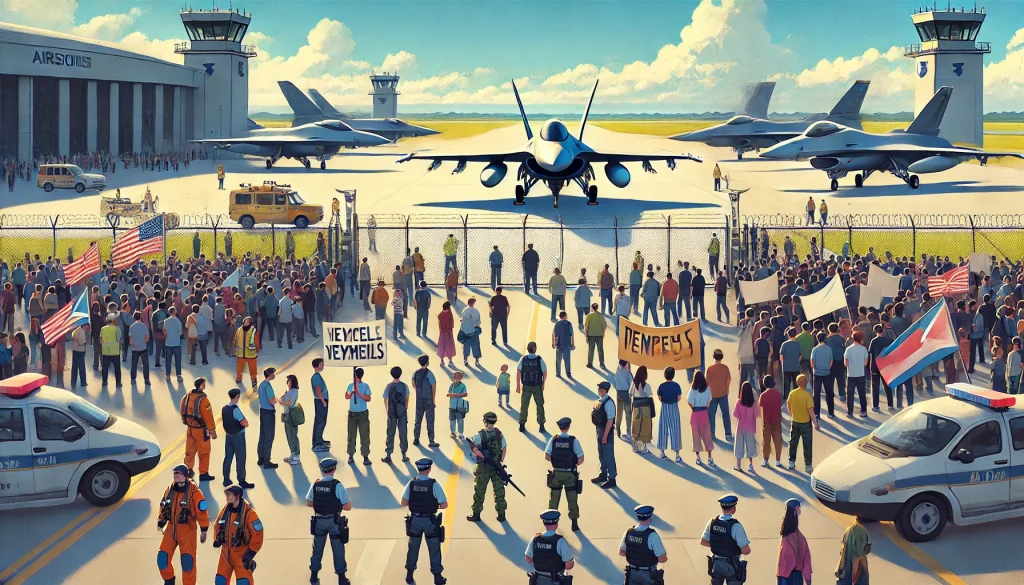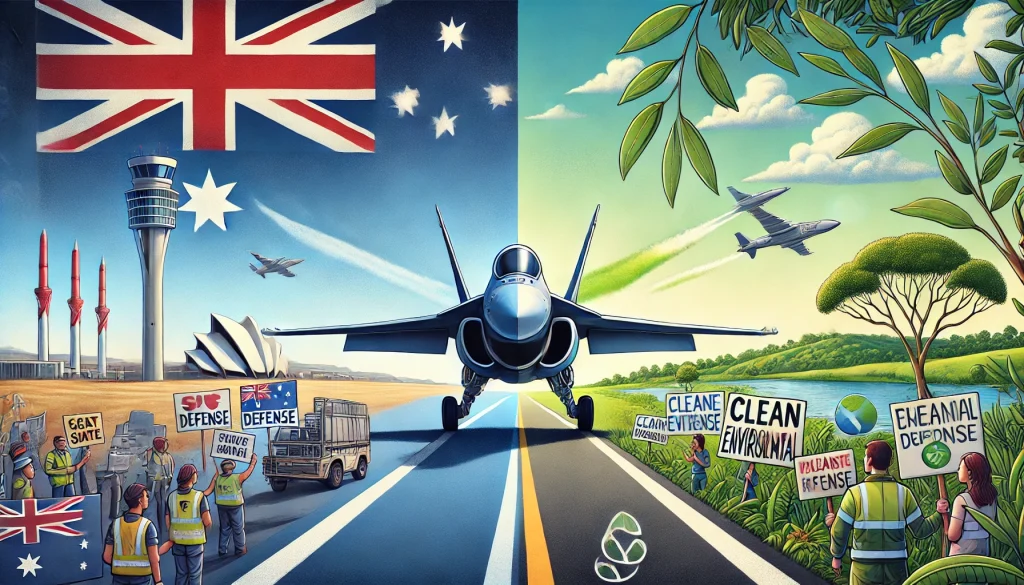This year’s Avalon Airshow—long celebrated as a showcase of cutting-edge aviation—took a controversial turn in 2025, as protesters and critics rallied against the involvement of global defence contractors and arms manufacturers. While airpower enthusiasts marveled at new fighter jets, drones, and missile systems, local and international observers debated whether Australia’s arms trade partnerships align with national values. Below is an on-the-ground look at the protests, the defence industry’s perspective, and how this ongoing conversation reshapes public sentiment about Australia’s role in the global arms market.
1. The Avalon Airshow: A Tradition Meets Tension
1.1 Airshow Significance
- Annual Spotlight: The Avalon Airshow stands as the Southern Hemisphere’s premier aerospace event, attracting hundreds of exhibitors, from state-of-the-art fighter jets to cargo planes.
- Global Presence: Defence giants from the United States, Europe, and Asia gather to display new tech, forging deals with the Australian Defence Force (ADF) and allied nations.
1.2 Why 2025 Sparked More Protests
- Recent Deals: Australia’s increasing arms contracts, including rumored missile co-production with foreign partners, fueled concern among pacifist and anti-war groups.
- Global Tensions: Shifts in the Indo-Pacific region’s security climate heightened interest in how nations, including Australia, invest in advanced weaponry.
Key Takeaway: While the airshow usually highlights innovation and national defence pride, 2025’s event turned into a flashpoint for political activism.
2. The Protests: Who and Why?

2.1 Main Groups & Motivations
- Peace Coalitions: Organizations like “Australians Against Arms” and “Global Peace Collective” staged peaceful marches, carrying banners opposing the “militarization of Australian policy.”
- Local Environmentalists: Some groups worry that big defence expansions could lead to land use conflicts, noise pollution, or expansions of local testing ranges.
- Students & Youth Activists: Younger protesters question the moral standpoint of arms deals, urging more funds for education, healthcare, or climate action instead.
Common Message: That Australia’s ties with large defence companies risk entrenching the country in global arms races, overshadowing humanitarian concerns.
2.2 Tactics & Messages
- Demonstrations: Organized sit-ins near the airstrip gates, distributing leaflets about arms trade ethics.
- Social Media Campaigns: #StopTheArmsTradeAU trended among local Twitter and Tiktok circles, highlighting stories from conflict zones.
- Public Art & Street Theatre: Some staged performance pieces depicting the “pipeline” from weapons manufacturing to conflict areas.
Atmosphere: Mostly peaceful, albeit with heightened police presence ensuring the airshow’s operations continued. A few minor scuffles with security were reported but quickly dispersed.
3. Industry and Government Perspectives
3.1 Defence Companies’ Stance
- National Security: Major defence contractors argue advanced aircraft, drones, and missile systems are essential for protecting sovereignty in a volatile Indo-Pacific.
- Economic Impact: They emphasize the job creation, high-tech R&D, and local manufacturing that arise from arms deals—especially in aerospace corridors like Victoria or South Australia.
- Export Opportunities: Some see Australia’s arms industry expansions as a chance to become a regional exporter, boosting national GDP.
3.2 Government’s Balancing Act
- Strategic Partnerships: The ADF’s modernization plan includes new fighter jets, naval expansions, and advanced missile co-development—aligning with allied nations.
- Transparency vs. Secrecy: Officials claim transparency in deals and compliance with global arms trade treaties. Critics note certain negotiations remain opaque, fueling suspicion.
- Public Opinion: Government statements highlight “defence readiness,” while acknowledging the protests as a sign of democratic discourse.
Core Tension: The government aims to balance national security and economic gains with the growing push for moral and diplomatic scrutiny over arms expansions.
4. How Local and International Opinions Shape the Debate

4.1 Australian Public Sentiment
- Polls: Early 2025 polls show Australians are split—some back a stronger defence posture due to regional tensions, others want peace-first policies.
- Media Coverage: Mainstream outlets highlight the glitz of new fighter jets but also run op-eds from anti-war activists. Social media often sees intense debates.
4.2 International Allies and Critics
- Allied Nations: Allies in the Five Eyes community (USA, UK, Canada, NZ) generally see Australia’s arms expansions as beneficial for shared security, possibly leading to joint R&D.
- Regional Neighbors: Some Asia-Pacific nations express caution about an arms race dynamic, urging diplomatic solutions.
- Global Peace Organizations: Criticisms revolve around potential arms exports to conflict-prone areas or enabling proxy wars.
Outcome: This mosaic of diverse viewpoints underscores how the Avalon Airshow evolves from a local aviation expo into a global platform for arms trade discourse.
5. Future Implications for Australia’s Defence Industry
5.1 Potential Shifts in Policy
- Export Controls: The government may tighten or clarify rules about which countries can receive Australian-made weapons.
- R&D Focus: More emphasis on “defence tech with humanitarian constraints,” i.e., improved non-lethal tech, advanced sensor systems for disaster relief.
- Public Engagement: Growing calls for parliamentary oversight or citizen referendums on big arms deals.
5.2 The Road Ahead for Evolving Public Sentiment
- Green & Peace-First Coalitions: Political parties or movements might challenge further expansions, pushing for international arms treaties or local job creation outside the defence realm.
- Defence Tech Partnerships: If tensions in the region persist, local manufacturing might accelerate, championed by pro-security factions who see arms expansions as vital for sovereignty.
6. Final Thoughts: Balancing Pride and Protest
The Avalon Airshow 2025 reveals a dual narrative—pride in Australia’s aerospace achievements and protests urging a reevaluation of arms deals. For many, advanced fighter displays highlight national prowess; for others, they symbolize an escalating arms culture overshadowing humanitarian or ecological priorities.
Key Takeaways:
- Public Debate Grows: As arms contracts expand, more citizens question ethical and economic trade-offs.
- Global & Regional Forces: Geopolitical tensions shape the government’s push for advanced weaponry.
- Industry & Jobs: Defence sector expansions can yield local benefits, though critics see potential for overshadowing peaceful priorities.
- Future: The dialogue around Australia’s arms trade is only intensifying, with the Avalon Airshow providing a stage for both celebration and protest.










